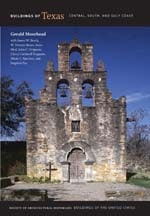During the 1880s and 1890s, this area was one of the largest quarries for cement producers in the Southwest. In 1917, the Japanese Tea Garden was initiated by San Antonio parks commissioner Ray Lambert, who hired Kimi Eizo Jingu of Japan to develop the former stone quarry. Jingu literally occupied the site, building a house for himself and his family out of the stone from the quarry. He proceeded to landscape the site with Japanese plants and in 1926 opened a tearoom on the upper floor of his residence. Jingu died in 1938 and, following the attack on Pearl Harbor in 1941, his family moved out of the house and the name of the site was changed to the Chinese Tea Garden.
The molded, reinforced-concrete torii gate installed at the entrance in 1941 was designed by Maximo Cortés and built by Dionicio Rodríguez. As was typical of Rodríguez's sculpted concrete work, the structural forms of the gate were designed to look like tree trunks, and here the concrete was stained to give it the color of tree bark. In 1980 the original name was restored to the complex by the San Antonio City Council. Preserved within the park are several lime kilns and a large brick smokestack, original to the cement works.















